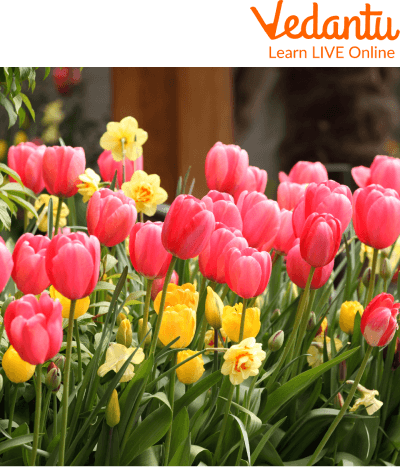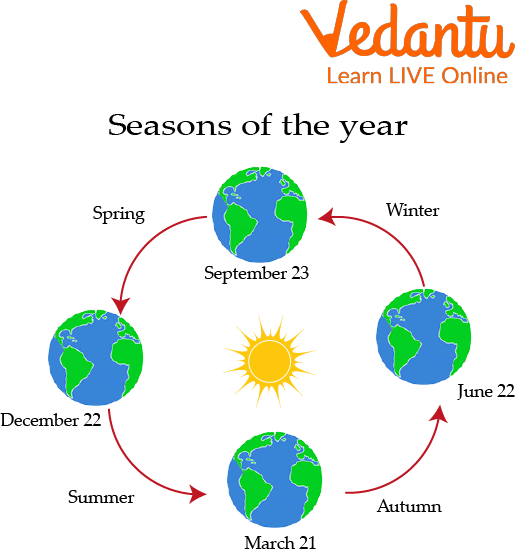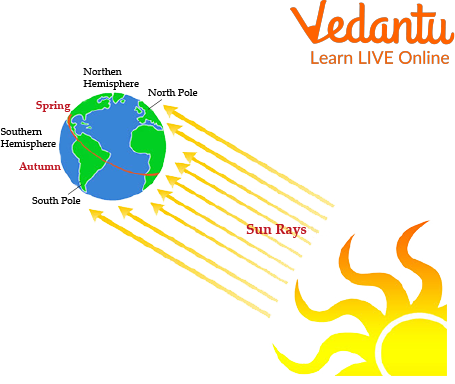




Key Concepts and Steps in Spring Formation Explained
There are many significant subtle differences associated with each season, such as changes in the kinds of food that are accessible, even though certain seasonal changes are much more evident (such as changes in the weather). For instance, winter in various regions of the world implies fewer daylight hours, colder temperatures, and minimal to no plant growth. In contrast, spring is bursting with fresh life, when gardens and flowers both start to bloom. So read on to know more about this beautiful season, spring. Let’s read more about the spring season in this article.

Spring Season Witnesses the Growth of Colourful Flowers
Spring Definition
Between winter and summer, spring is the season of the year in climatology when temperatures progressively increase. It is typically seen as lasting from the spring equinox (when day and night are of equal length), which occurs on March 20 or 21, to the summer solstice (when the year's longest day occurs), on June 21 or 22, and from September 22 or 23 to December 22 or 23 in the Southern Hemisphere. In only high latitudes do winter temperatures turn into summer heat in the spring; near the equator, year-round temperature variation is minimal. Polar locations have a brief spring season.
The importance of spring's role in food production has inspired rituals and festivals in many cultures. The idea of spring is connected to the sowing of crops in European languages. After the wintertime dormancy, all plants, including those that have been cultivated, start growing again during this time of year. Animals are also significantly impacted: they emerge from hibernation or winter dormancy to start breeding and reproducing, and birds fly poleward in reaction to the hotter temperatures.

Seasons of the Year
How is Spring Formed?
The astronomical definition of spring is that it begins when the Sun shines directly overhead at noon on the equator. Due to fluctuations in the Earth's orbit around the Sun, this specific time varies from year to year. The springtime (or spring) equinox takes place in the higher latitudes from March 19 to 23, but frequently on March 21.
All points on Earth enjoy 12 hours of sunshine and hours of darkness on both equinoxes, and the Sun comes up in the East and sets in the West. The Earth's tilt and its annual orbit around the Sun cause the seasons. Weather experts frequently define springtime as the 3 months of March to May because it is the time when winter ends and summer arrives. This means that spring officially starts on March 1.

How Seasons are Formed
Spring Landform
India's spring changes with altitude and climatic patterns as a result of the country's tremendously diverse geographic landforms. States in the north and west have semi-arid and subalpine forms of vegetation, whereas the majority of the southern and eastern states enjoy tropical climates and vegetation.
Summary
After the chilly winter months, spring is when the natural world resuscitates and regenerates. Plants that have been inactive for a while start to grow anew in the spring, and animals that have been hibernating come out of their slumber.
On equinox days, day and night are about equal in length. Each year there are two equinoxes, one in the spring and the other in the fall. The spring equinox, also known as the vernal equinox, takes place about March 20 in the Northern Hemisphere and about September 22 in the Southern.
We read about the spring season in this article, and we also saw some spring season pictures for kids in this article. We hope you enjoyed reading this article.
FAQs on How Is Spring Formed?
1. Is spring a rainy season?
Since warmer air can contain more moisture than colder air and springtime air gets warmer, spring is the highest rainfall season in the Northern Hemisphere. Less dense than that of the colder, dryer upper atmosphere air is the warmer, moist air.
2. State an interesting fact concerning the spring season.
A surprising fun fact is that in contrast to other seasons of the year, spring is when kids grow the fastest. The spring and winter months are when tornadoes are most likely to occur. Over 17 million intensive outpatient program visits are attributed to allergies each year, primarily in the spring and autumn.
3. In the spring, what do people wear?
Since the temperatures can change, it's best to layer your clothing when dressing for spring. Bring a jacket or cardigan with you if you're sporting short sleeves, for instance, in case you get cold.









